Mangalsutras From Different States of India – Many Forms, One Unique Meaning
30 Second Summary
- Mangalsutra, literally meaning the sacred-thread, is an important part of the Hindu culture.
- It dates back to colonial India and is now worn by Indians all over the world as one of the many marks of a married woman.
- It is originally a yellow thread on which black beads are strung adorning the neck of the lady from the moment she gets married.
- The traditional South Indian mangalsutra designs are designed differently depending on the faith of the people.
- Mangalsutras are called by different names like Thaali, Mangalyam, Minnu, Dehjoor in different parts of the country.
What is Mangalsutra?
Mangalsutra, literally meaning the sacred-thread, is an important part of the Hindu culture. With it being in widespread use all over the country, let’s delve deep and explore the mangalsutras. The importance of Mangalsutras in the context of Indians & importantly the Hindu brides is quite significant. Not because of what is mentioned in the ancient Hindu scriptures about them, but plainly because of the importance laid on it by people who believe in it. They are not just worn by Hindus in North India, but by brides of many other states. In fact, the tradition associated with Mangalsutra is believed to have travelled from South India to North India. As a result, it’s called by different names like Thaali, Mangalyam, Minnu, Dehjoor, etc. in different parts of the country. Also, the traditional South Indian mangalsutra designs are designed differently depending on the faith of the people.
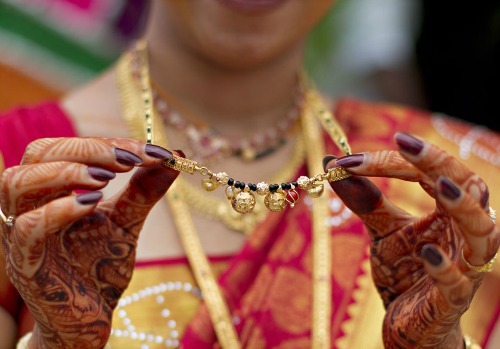
For the majority of us Indians who have grown old on a heavy dose of Bollywood or regional films, we already know a bit about the mangalsutra. Most of what we know about it has come from the popular TV soaps and movies. In fact, the recent Bollywood Hindi movie Humari Adhuri Kahani had scenes where Vidya Balan’s husband got miffed when Vidya decided that she no longer wanted to continue wearing the mangalsutra while being married. Then, a different Bollywood movie – Ki & Ka, which is even more recent, again had a promo poster that stereotyped the mangalsutras. The makers tried to portray a role reversal through the poster that showed Kareena putting a Mangalsutra
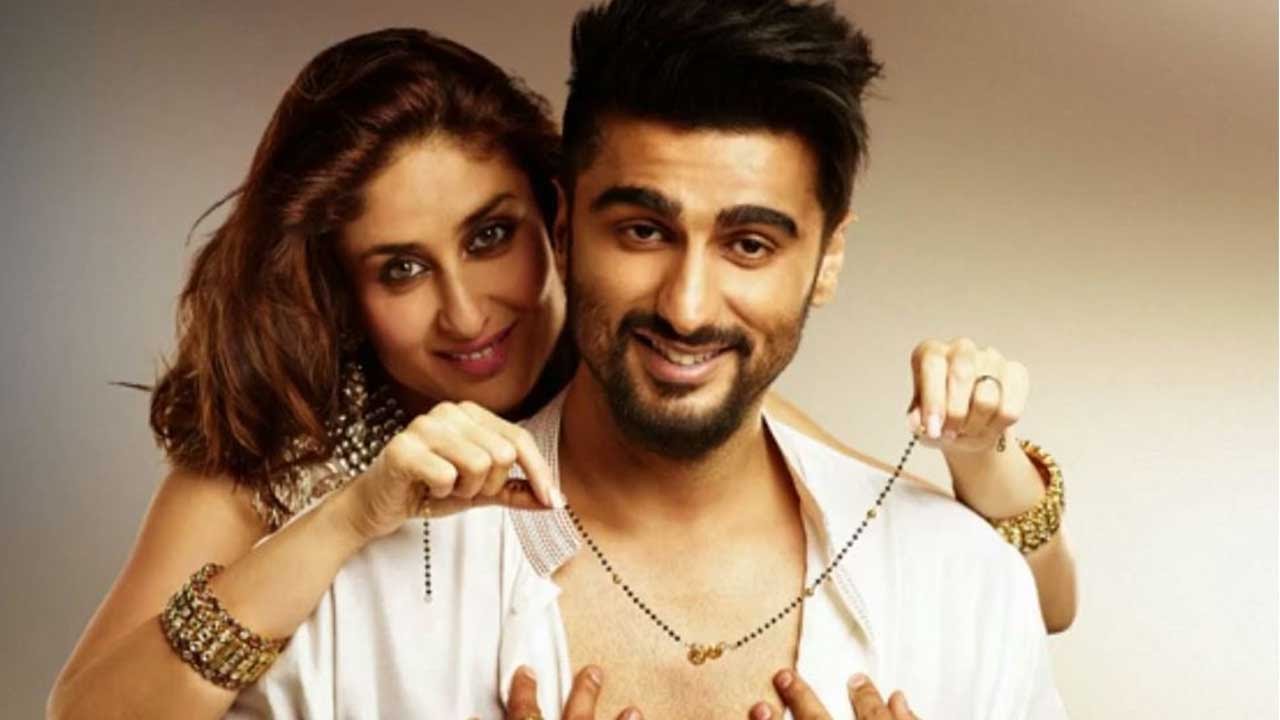
Ki and Ka – Arjun Wearing Mangalsutra
Ki and Ka – Arjun Wearing Mangalsutra
around Arjun’s neck because Kareena was the bread earner while Arjun was a stay-at-home-husband. Though the poster lacked sound logic, it did convey the message. After all, movies are for entertainment and need not be taken seriously. Ah, sorry, we deviated even before we began.Arjun’s neck because Kareena was the bread earner while Arjun was a stay-at-home-husband. Though the poster lacked sound logic, it did convey the message. After all, movies are for entertainment and need not be taken seriously. Ah, sorry, we deviated even before we began.
Getting back to the job at hand, through this post, KuberBox will try and break down the Mangalsutra for you. We will write in detail about the different types of mangalsutras, different names of the mangalsutras, and the importance of mangalsutra for different castes. Most importantly, we will also cover the changing pattern and designs of the mangalsutra and its place in the modern society.
The Meaning Of Mangalsutra:
The Mangalsutra: timeless and elegant. It dates back to colonial India and is now worn by Indians all over the world as one of the many marks of a married woman. This along with a nose ring, some choodis (bangles), toe rings, vermillion (sindoor) and a red bindi makes the Indian bride whole. It’s a melange of gold pendants with religious motifs coupled with black beads on either side is meant to ward away the evil eye from the couple. These beads have been said to absorb the negative energies focussed toward the couple and radiate only happiness for their life together. The beads are also believed to safeguard and protect the life of her husband.
‘Mangal’ meaning holy and ‘Sutra’ meaning thread, Mangalsutra literally stands for a holy thread. It is originally a yellow thread on which black beads are strung adorning the neck of the lady from the moment she gets married. This yellow thread is prepared using a yellow turmeric paste and is tied to the Tanmaniya (Mangalsutra pendant can sometimes be called Tanmaniyas). The Tanmaniya can have diamonds and gold as part of its design.
Different Types Of Mangalsutra Throughout Our Country:
Known for its vast and diverse culture, India has traditions intrinsically intertwined into each state within the country. Weddings are one such tradition that has the mangalsutras set at the centre of the ceremony. The different states and then different caste and sometimes even the sub-castes – all have different customs and traditions. Therefore, it is always difficult to paint the whole country in one colour when there is so much diversity. We will seek to throw more clarity into the different types used across the country, their names and their basic designs. This would hopefully give you some information about the Mangalsutras that has never been shared before.
- Mangalsutra of North India – Buy North Indian Mangalsutra Online
- Mangalsutra of Tamilnadu – Thaali – Buy Tamil Thali / Thirumaangalyam Online
- Mangalsutra of Kerala – Minnu & Thaali – Buy Kerala Minnu Online
- Mangalsutra of Andhra Pradesh – Bottu – Buy Andhra Bottu Online
- Mangalsutra of Maharashtra – Buy Maharashtrian Mangalsutra Online
- Mangalsutra of Karnataka – Buy Kannada Mangalsutra Online
- Mangalsutra & the Modern Indian Woman
- Mangalsutras by KuberBox
Different Types Of Mangalsutras of North India
Most of what you see in Bollywood Hindi movies is what defines the mangalsutras of North India. Generally used by the Hindus, they call it by the name – “Mangalsutra”. Mangalsutra stands for a set of black beads chain attached to a gold pendant called tanmaniya. If it is just the pendant of mangalsutra that you are referring to, the right word for it is tanmaniya.
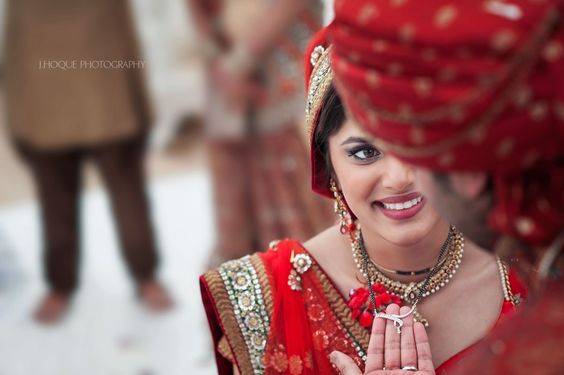
North-Indian-Mangalsutra Source
North-Indian-Mangalsutra Source
Traditionally made of plain gold, they come in varied designs. However, the design is independent of the caste/sub-caste of the bride or groom, unlike the mangalsutras of Tamilnadu that you will get to know about later in this post. In most of the Hindu north Indian weddings, mangalsutra plays an important part and has a separate ceremony where the groom ties mangalsutra around the neck of his bride. However, one must note that among many Hindu castes the mangalsutra is not mandatory and historically they didn’t wear them. But, with the widespread use of mangalsutras across TV soaps and movies, this practice has been accepted by many castes which historically did not follow such tradition. Many of them still do not follow it as a compulsory tradition per se; rather have added it as just another ceremony of a multi ceremony wedding. That’s because mangalsutra is, nowadays, seen as the engagement ring of the west. It may be an overstatement to say that it now defines the marital status of a married couple, but this is true to a certain extent. We will discuss more on what mangalsutra means to a modern young woman below to capture the changing colours of this piece of jewellery and the sign of a married woman.
Some communities like the Marwaris and the Gujaratis generally go for diamond-studded mangalsutras. You will find this trend being caught up by a majority of other communities because of the versatility of the diamond or stone studded mangalsutras. The diamond mangalsutra fulfils the requirement as wedding jewellery first and can later be used as an accessory. That is the reason you will see such mangalsutras in utmost variety with all jewellers.
- Bengali – Bengalis have no tradition of anything like bengali mangalsutra. Married Bengali women wear Shakha Paula bangles mandatorily. Shakha comes from Shankha, meaning conch while the Paula is made of corals. One set of the bangles is worn on each hand by every married woman.
- Gujarati – Gujarati mangalsutra design consists black beads with intricate gold pendant.
- Sikh – The formal engagement or kurmai is usually a family affair. The bride’s family goes to the groom’s house carrying gifts that include sweets, clothes and jewellery. The bride’s father or guardian gives the groom a gold ring, a Kada (Gents Bangle) and gold mohre (coins). Later, these coins are strung into a black thread and given to the bride. She wears it around her neck and it is akin to the mangalsutra worn by Hindu women. But amongst Sikhs, the bride wears this thread only during special occasions. Chuda (wedding bangles) are a more important symbol of marriage for Sikhs than anything else.
- Sindhi – For Sindhis, Mangalsutra is still an important part of the marriage. Generally made of gold, they are worn with black and gold beaded chains. The mangalsutra is generally from the groom’s side.
- Marwari – The Marwaris do not have a tradition of mangalsutra, but over time have accepted that into their customs. It’s not mandated for a Marwari married woman to sport them. The important jewellery which is the identity of a newly married Marwari woman is the Chuda (wedding bangles) and the sacred thread tied to her wrist during the wedding ceremony.
- Oriya – There is no custom of mangalsutra among Oriya brides.
- Kashmiri – Kashmiri Pandits have ‘dejhoor’ which can be considered in close resemblance to the

Kashmiri Pandit Bride With Dejhoor | Source
mangalsutras of the Hindus. These are the elegantly shaped golden ornament, all most the size of an almond, suspended through both the ears either by a golden chain or coloured thread up to chest from the day of the marriage. The “dejhoor” is suspended through the ears to strike with the women’s chest for wishing the long life of her husband. This yantra, Dejhoor, is dangled from piercings in the upper ear cartilage, always the left ear first and then the right, and initially, on the day of Devgoan. (source: Internet)
The communities that do follow the ritual of mangalsutra are very superstitious about it. It’s considered bad if the mangalsutra breaks or gets lost. Thus, they are always securely kept with trust & love and form an important symbol of the wedlock.
Mangalsutras of Tamilnadu – Thaali
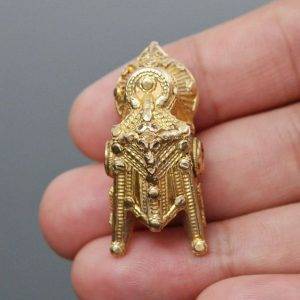
Maangalyam Source
Firstly, in Tamilnadu, they are called Thaali (pronounced Thaa-Lee) or Thirumangalyam (sometimes, just Mangalyam) or Thaaly. Secondly, it needs to be known that they come in many shapes and forms (around 30). In Tamils, the Thaali come in different shapes and designs and sizes and bear different importance depending on the caste or sub-caste of the bride and the groom. Thaali is generally worn with a gold chain or “Manja Kayiru”, which means yellow thread. In most cases, the Thaali is a representative of the family deity – like Goddess Meenakshi, Lord Sundareshwara, Tulsi plant, Lord Shiva or one of the many symbols of Lord Shiva.
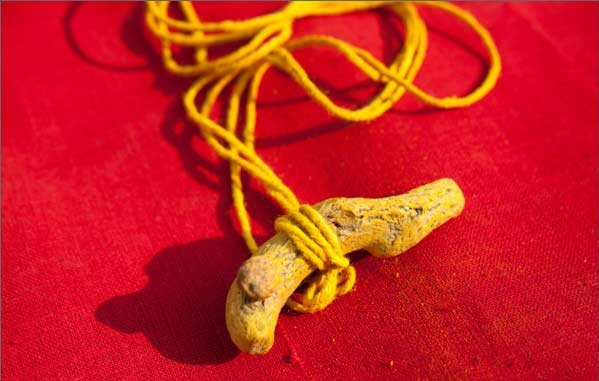
Turmeric piece with yellow sacred thread | Source
Turmeric piece with yellow sacred thread | Source
Ideally bought from the groom’s side, sometimes the family also adds other items like gold coins, corals, gold roundels and bottu to the main Thaali. A Thaali generally weighs between 4 to 8 grammes and is made of 22K or 18K Gold (if studded with diamonds). They can also have motifs likesun, moon, Thulsi, Shivling, Lord Thiruman, Goddess Meenakshi, etc. as a part of the design and depending on the religious beliefs of the family. They can further be decorated with charms occasionally. For those who cannot afford gold Thaali, there is always an alternative in the form of turmeric. A piece of turmeric can be tied to the Manja Kayiru and be used as a mangalsutra/Thaali.
Did You Know: There was a legislation passed 4 decades ago in Tamilnadu that made mangalsutra (Thaali) redundant in a legal wedding ceremony.
Just like for Hindus from North India, the Thaali bears significant cultural importance when it comes to a Tamil marriage. There is a particular ceremony which is only for the “wearing-of-the-thaali” when the groom ties the Thaali around his wife’s neck. The wife is expected to have the Thaali on her forever from that moment on until the death of her husband. It is believed to protect her husband and her family. The husband makes 3 knots, with each knot representing the unity between husband and wife, commitment to both the families and finally the reciprocal commitment from the boy for the girl’s prosperity and wellbeing at her new home. That is why it is believed that the third knot is made by the boy’s sister. Some also believe the third knot to represent the girl’s devotion to the gods. In Tamil marriages, the Thaali is worn with the yellow thread during the ceremony and later replaced with gold chain or mangalsutra chain (nallapusalu) for more sturdiness to handle the daily use.
Did You Know: The black beads mangalsutra chain is also called Nallapusalu
It is in Tamilnadu that you get to witness the maximum variety when it comes to Thaali. But the irony is that the Thaali is supposed to be concealed when worn in such a way that it is not visible to others. Each motif or design made on the Thaali represents something different. For example, the shiva linga embossing on the gold Thaali symbolises fertility while the Tulsi embossing symbolises purity. Tamilnadu’s diverse thirumangalyam are a treat for jewellery enthusiast and researchers who wish to study them. We will see some of them below –
The above picture exhibits the following Thriumangalyam varieties –
- Meenakshi Sundareshwar Thaali – Lord Sundareshwara & Goddess Meenakshi
- Tulsi Sun Moon Thaali – Tulsi plant with Sun & Moon
- Bottu Thaali
- Shivlinga Thaali – Worshippers of Lord Shiva
- Thenkalai Naman Symbol Thaali – Worshippers of Lord Vishnu
- Vadukalai Naman Thaali with Conch & Chakra – Worshippers of Lord Vishnu with Sudarshan Chakra (famously called Shanku Chakra Naman or Sangu Chakra Naman)
- Annamlakshmi Thaali
[magento store=”1″ sku=”T0128,T0132,T2866,T2868,T2869,T2870,T2873,T2875,T2876,T2867,T2871″ prefix=”INR ” suffix=”” title=”h8″]
Though traditionally the thirumangalyam did not have stones studded in them (Except when rubies are studded), these days the young brides and grooms are seen opting for diamond studded Thaali for their wedding. This is in line with the changing social norm surrounding the wearing of mangalsutras.
Kerala Mangalsutras – Minnu & Thaali
India never ceases to surprise and delight, and this is what you must be feeling at this moment getting to know the myriad variety of mangalsutras across the country. As we travel down to the beautiful coastal state of Southern India, the Kerala, things start getting more interesting.
In Kerala, the Syrian Christians use Minnu as the auspicious wedding thread – equivalent to mangalsutras of the north. The Kerala Hindus also use Thaali, which in Kerala is also called Ela Thaali. The same is also called Elagu Thaali sometimes. Ela meaning leaf, Ela Thaali stands for the Thaali in the shape of a leaf or bearing the design of a leaf. The Ela Thaali generally also comprises of an Om symbol embossed or cut-out on the leaf-shaped gold sheet. The Muslims of the North Kerala do not have any tradition of mangalsutras, whereas the Muslims of South Kerala use the Thaali as their mangalsutra. What is significant and can only be observed in Kerala is that the mangalsutra which is generally a part of Hindu tradition and culture has found a way into the Christian and Muslim wedding traditions and ritual in Kerala. This fact has intrigued many before and as a result, you can find people asking about it on popular Q&A sites like Quora.
Somebody posted a question – “Do Christian women in Kerala wear Mangalsutra?”, and you will find a number of answers from Kerala’s Christian women here, explaining the reasoning behind the tradition.
There is another tradition in Kerala related to mangalsutras that is unique to a particular sect – Manthrakodi. Manthrakodi is a tradition unique to Syro-Malabar weddings. Manthrakodis are sarees specially bought by the groom’s family and are richly embroidered with gold and silver threads. 21 threads carefully taken from this manthrakodi are intertwined in seven sets, 3 threads each and it is these threads that are tied around the bride’s neck as a ‘thali’(mangalsutra) – Taken from Quora
Minnu – A Minnu is generally made of 13 gold beads arranged in the form of a cross on a heart shaped medallion. It is usually hanged using the seven threads taken from the bride’s silk saree (Manthrakodi) gifted to her by the groom.
Sometimes, it is difficult to draw distinct lines between which community uses what. For example, some Kerala Christians use Thaali and not the Minnu. Just that their Thaali is designed in sync with the design aesthetics of a Minnu. The Christian Thaali has the cross while the Hindu Thaali bears the Om.
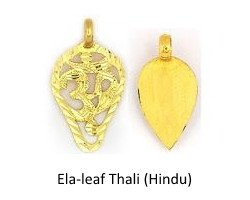  |
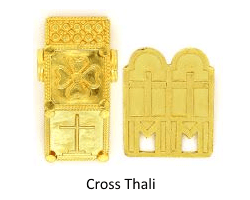  |
[magento store=”1″ sku=”T2874,T2877″ prefix=”INR ” suffix=”” title=”h8″]![]()
![]()
Types Of Mangalsutras of Andhra Pradesh
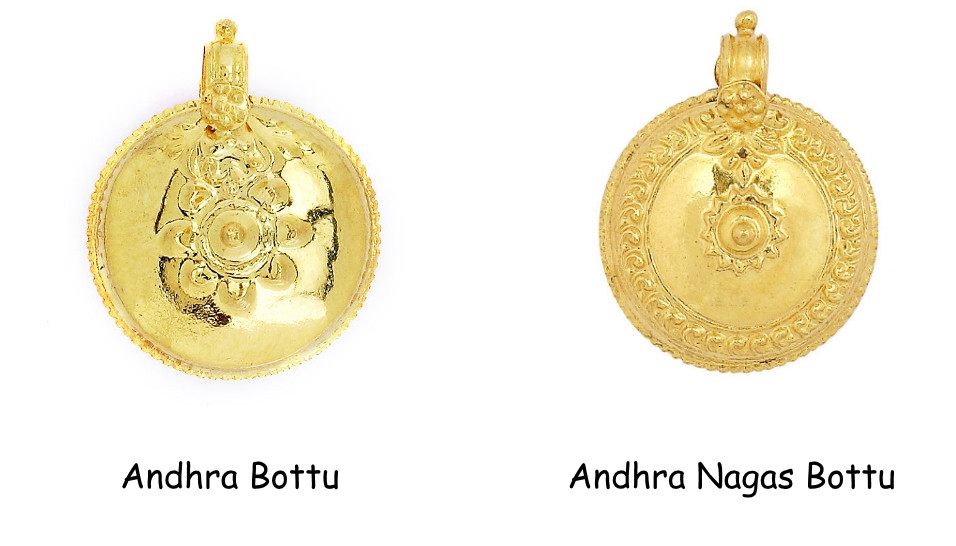

Andhra Bottu
Called Mangalasutramu / Pustelu / Maangalyamu / Ramar Thaali / Bottu in Telugu, the Mangalsutras of Telugus are very similar to that of Tamil Nadu and rest of Southern India. Generalising the Thaali of Andhra Pradesh, we can say that the Telugu mangalsutra consists of two discs (coins) made of gold separated by beads. Among the beads, you’d find corals, pearls, etc. It then looks like a bead necklace with two gold sovereigns hanging from it, each weighing 3 to 6 grams.
What is even more interesting is that one disc comes from the groom’s side while the other from bride’s side.The shape of Bottu is circular and is made of gold, and may or may not have some design carvings. It is worn with coral and pearl beads necklace or gold chains.
A friend of ours helped us with these designs taken from an Andhra jeweller’s catalogue. It has numerous designs of bottu, bottu thaali & cross thaali sported by Hindu & Muslim communities.
[Not a valid template][magento store=”1″ sku=”T0118,T0123,T0124,T0126,T0127,T0128,T0120,T0125,T0138,T0139,T0140,T2872″ prefix=”INR ” suffix=”” title=”h8″]![]()
![]()
Maharashtra Mangalsutra
In Maharashtra, the mangalsutras have black beads with two bowl-shaped vatis on either side. The Maharashtrian Mangalsutra has two gold and black beads strung together in a double line and joined by the central vati pendant in the form of two cups.
This structure, with the two strands of gold and black beads chain, stands for Shiva & Shakti, the gold mangalsutra in the middle that joins them symbolises the holy union of Lord Shiva and Shakti. The two stands of beads fused together are symbolic of the two, husband and wife, in perfect continuity creating a whole around the neck of his woman. Just like any other mangalsutra wearing community, Maharashtrians also believe the black beads to ward off evil eye & help keep the marriage happy. They have two types of the black beaded chain –
- Nirgun – The whole chain is made of just black beads
- Shagun – Every 9 black beads are separated by 2 golden beads
The cups as seen in Marathi Mangalsutras are hollow from one side and raised from another. It is ideally required by a married Maharashtrian woman to wear the mangalsutra with the hollow side of the pendant facing towards the body. Generally, no design is placed on the elevated portion of the cups as it is believed that the simpler the design, the better the effects.
Did you know: A new bride can wear the mangalsutra with the back side as front for the first whole year of marriage. This allows her to flaunt her newly-wed status to the world.
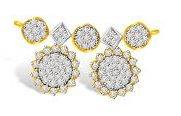

Traditional Marathi Mangalsutras – Modern Version
The two vatis represent the commitment to the husband and husband’s family. Some coastal communities wear pendants with three vatis where the third vati represents the commitment to the sea god.
The Konkani women wear three necklaces called Dhaaremani or Muhurthmani.
[magento store=”1″ sku=”T0114,T0116,T0117,T0126,T0129,T0130,T0131,T0133,T0138,T0120,T0125,T0141″ prefix=”INR ” suffix=”” title=”h8″]![]()
![]()
karnataka mangalsutra
The Kannadigas call it by the name of Maangalya-Sutra. It is more or less similar to the Maharashtrian design consisting of two hollow vatis. It is made of two round golden plates along with corals, freshwater pearls, semi-precious stones and black stones/beads.
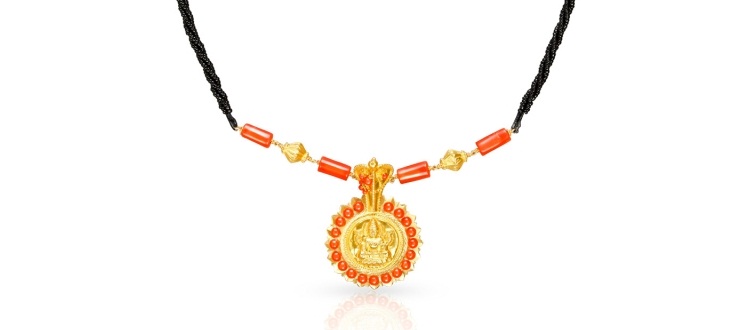

Karnataka Coorgi Karthamani Pathak
In the Coorg region of Karnataka, the Coorgi women wear Karthamani Pathak as the symbol of marriage, an equivalent of mangalsutra for them. Karthamani pathak refers to the set of Karthamani & Pathak which are two separate jewellery. The Pathak stands for the gold pendant which usually has a large gold coin with Lakshmi or Queen Victoria engraving and has small round rubies studded on the circumference of the coin. This coin pendant is surmounted by a cobra that stands for fertility. It may sometimes also have freshwater pearls hanging from it. The Karthamani is the necklace that is used with this Pathak and is made of corals and gold beads sewn on a thread or black beads. Sometimes, the thread may also be replaced with a gold chain.
[magento store=”1″ sku=”T0118,T0124,T0127″ prefix=”INR ” suffix=”” title=”h8″]![]()
![]()
Different Types Of Mangalsutra & the Modern Indian Woman
Today with so many women working and running their households, they are driven by the fast life. Office suits with blazers and trousers are taking over a woman’s wardrobe. And with this attire many prefer a sleek and subtle, designer mangalsutra to suit their professional persona. Diamond studded tanmaniyas that still maintain the original values and symbols have become every woman’s dream.
This is the reality of the changing times. Of course, you’ve watched some popular Indian saas-bahu television soaps, where the lead actresses are seen wearing designer mangalsutras and chudis along with their red sindoors gracing their foreheads. This has caused a big stir in the Indian market and jewellers have been seeing a rise in the trend of a mangalsutra in India. The most important changing pattern to note of the modern times is that the mangalsutra is not divided by the caste or the community, rather by one’s fashion needs. For most, it has become an additional accessory and ornamental jewellery which they can flaunt to show their fashionable side. It is a statement of one’s fashion consciousness.
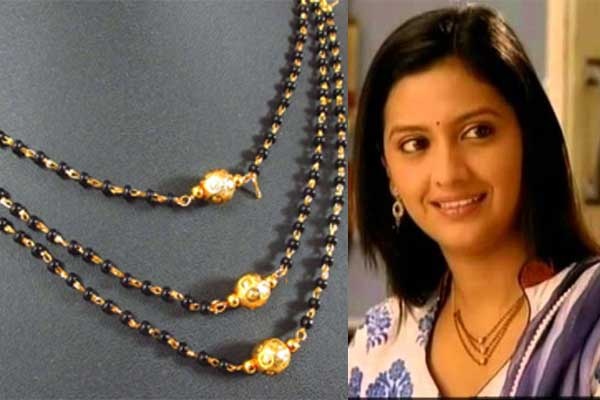

Jahnvi Mangalsutra – This is a three strand mangalsutra that became popular as the “Janhavi Mangalsutra” after the lead character from TV soap by the name of Janhavi sported it | Source
So much so that even the women belonging to Muslim community are embracing the mangalsutras and choodas, which are typically a Hindu/Sikh symbol. Some national dailies too have reported this and the same was verified by me when I quizzed some of my friends from the Muslim community about this. When asked whether they would be ready to wear mangalsutra or chooda after marriage, most said they were, in fact, looking forward to the day and would love to flaunt them. They collectively echoed, “It’s not a part of our way of life but why not. Have grown up watching our favourite stars sport them on TV & Movies & we fancy wearing them as well”. They went on to say then that the for women of our generation it’s all about living the grand life, the life that they have imagined for themselves and one inspired by celebrities. They have no qualms in sporting something which is considered a part of some other culture or caste, given that they truly want to sport them. Some of them, however, had their reservations because they weren’t sure if the elders in their family would accept it.
The biggest trend to appear when concerned with Mangalsutras is that today’s women prefer diamond studded petite mangalsutra pendants, hung on a single strand gold and black beads mangalsutra chain. The chain has remained the same while the pendant style and design have matured over the years and now covers almost all possible patterns. The size of the pendant and the amount of diamond studded has now become a function of one’s social status. Many women now choose to get themselves a well-designed and fashionable mangalsutras which are taken out on special functions and festivals and worn with traditional attire. Given the fact that most working women have to wear either western outfits or salwar-kurtis to the office, a short length chain has become essential as it ensures that the designer diamond mangalsutra is visible at all times to others.
We are heavily influenced by the media and when a celebrity starts a trend, people rush to catch on. A similar thing happened when Shilpa Shetty redefined the mangalsutra by wearing it as a bracelet around her wrist with the auspicious black beads chain. This was an ingenious way of adhering to tradition while fusing in the practicality of one’s everyday life. Needless to say, it became a rage with young brides vying to get hold of them for themselves.
[magento store=”1″ sku=”T0027,T0025,T1713,T0100,T0033,T0082″ prefix=”INR ” suffix=”” title=”h8″]![]()
![]()
Types Of Mangalsutras by KuberBox
At KuberBox, our options of mangalsutras will leave you spoilt for choice. From sleek to delicate designs each piece from our Contemporary Collection will have you lusting for one. Set with diamonds and a range of precious gemstones in strong 18K or 14K gold, they will surely last you a lifetime. And, if you are wondering why it’s not available in 22k Gold like the mangalsutras of earlier times, read here why 22k Gold is a bad choice of metal to go with diamonds.
Final Thoughts On Different Types Of MangalSutra
My grandmother always spoke about her husband so fondly that when I asked her for her view on the mangalsutra it changed my entire idea of love and spending the rest of my life with someone changed. In her words “A Mangalsutra, is a symbol of a married woman, just like as in the west they have a ring on the ring finger. Graceful and yet a commitment to the man you love. A piece of jewellery bought by a husband for her wife lovingly, the mangalsutra combines a woman and her man in love”
Whatever be the reasons, this sacred thread still is a symbol of the bond of marriage.
Further Reading – https://www.quora.com/Do-married-women-in-India-hate-to-wear-Mangalsutra-or-applying-Sindoor
Different Types Of Mangalsutra FAQ Section
Do Bengali wear Mangalsutra?
Bengali – Bengalis have no tradition of mangalsutra. Married Bengali women wear Shakha Paula bangles mandatorily. Shakha comes from Shankha, meaning conch while the Paula is made of corals. One set of the bangles is worn on each hand by every married woman.
Why is Mangalsutra black?
Mangalsutra, literally meaning the sacred-thread, is an important part of the Hindu culture. It is believed that the black beads of a mangalsutra are blessed with divine powers to protect the married couple.
Mangalsutras From Different States of India - Many Forms, One Unique Meaning by Shaila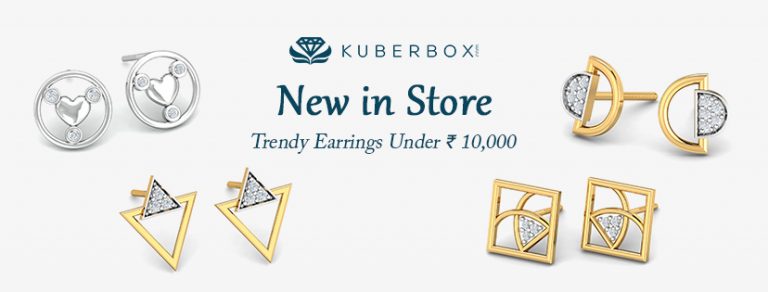
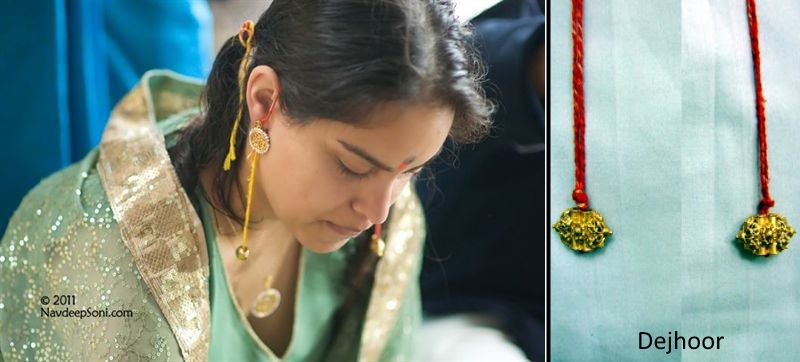
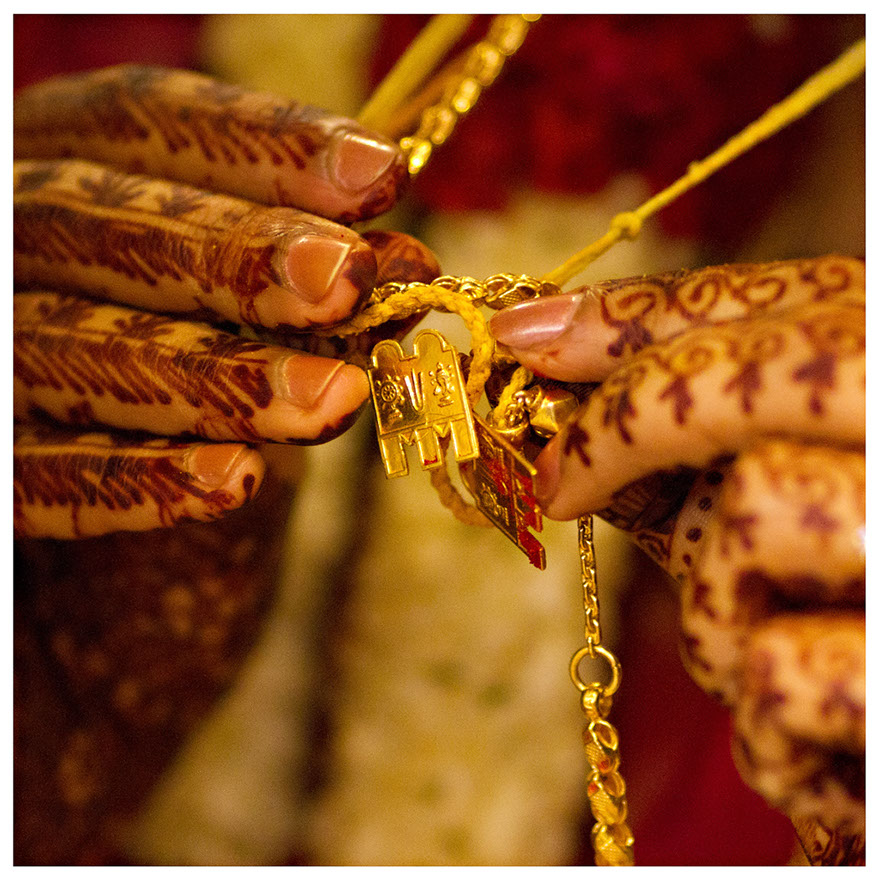
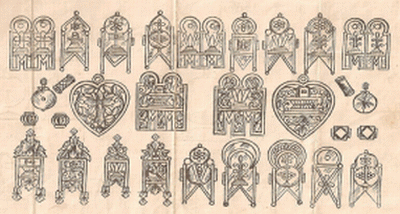
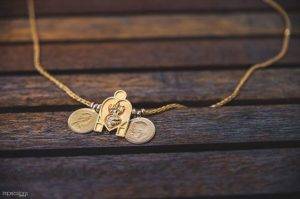
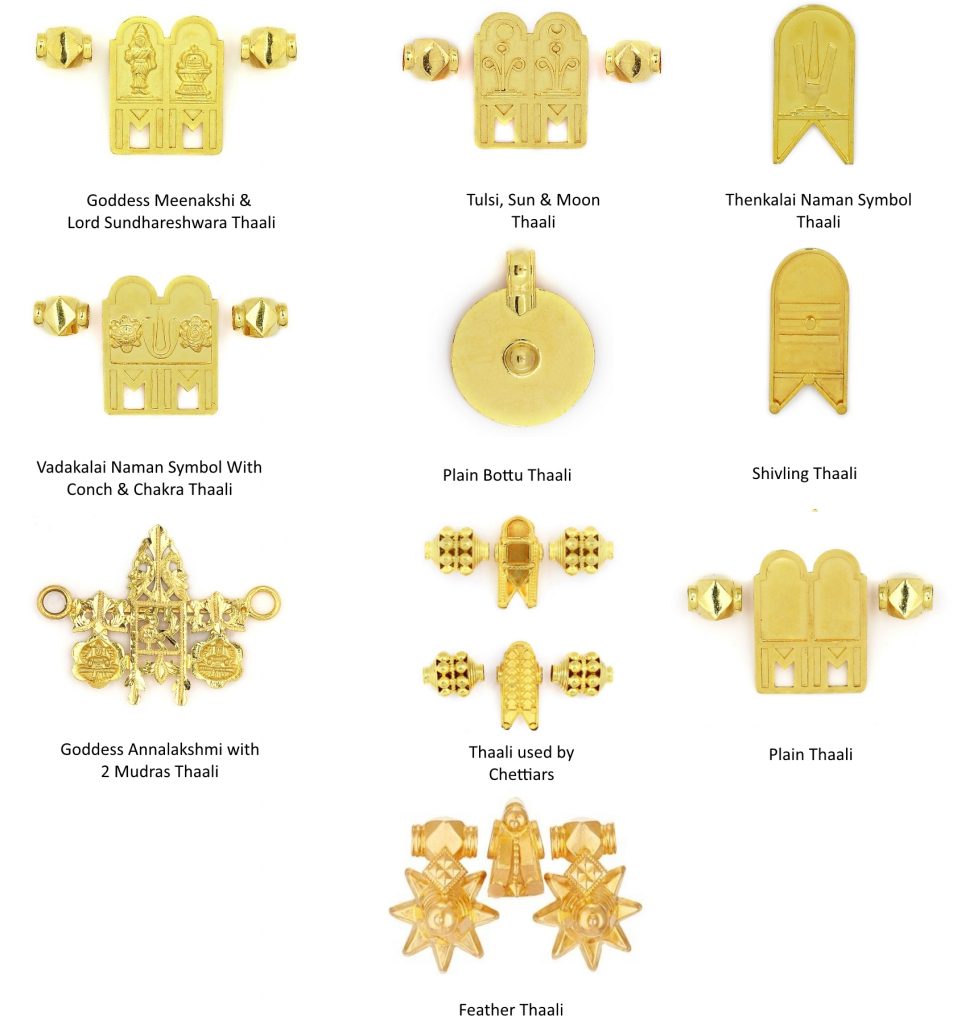
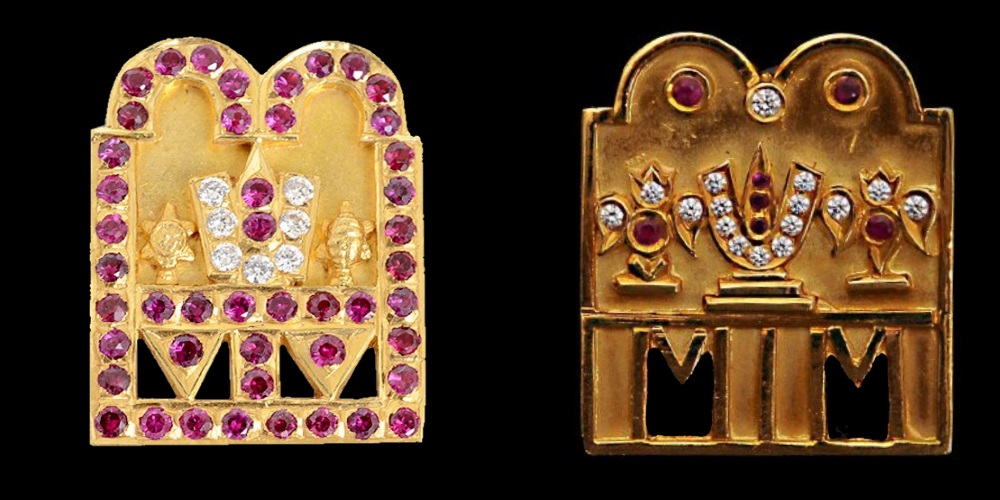
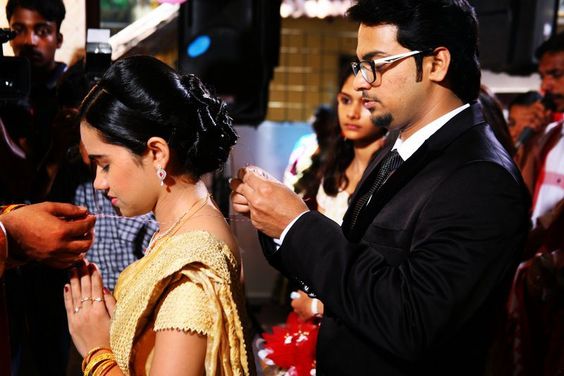
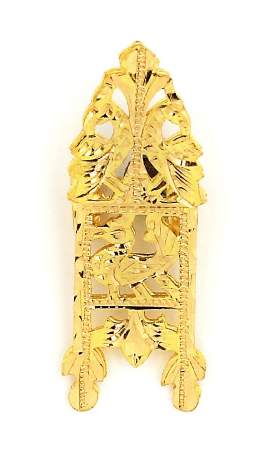
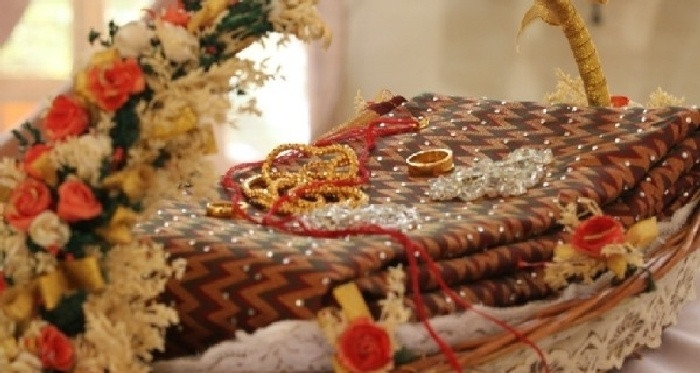
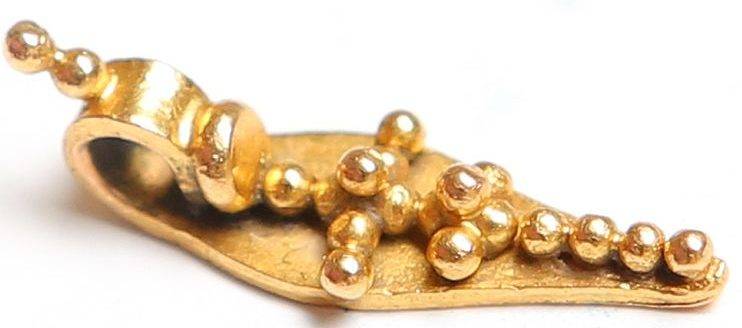
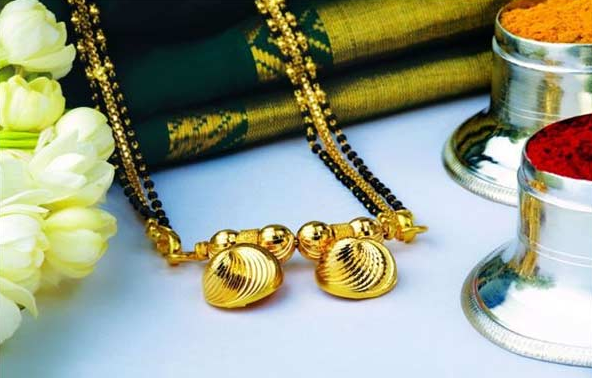
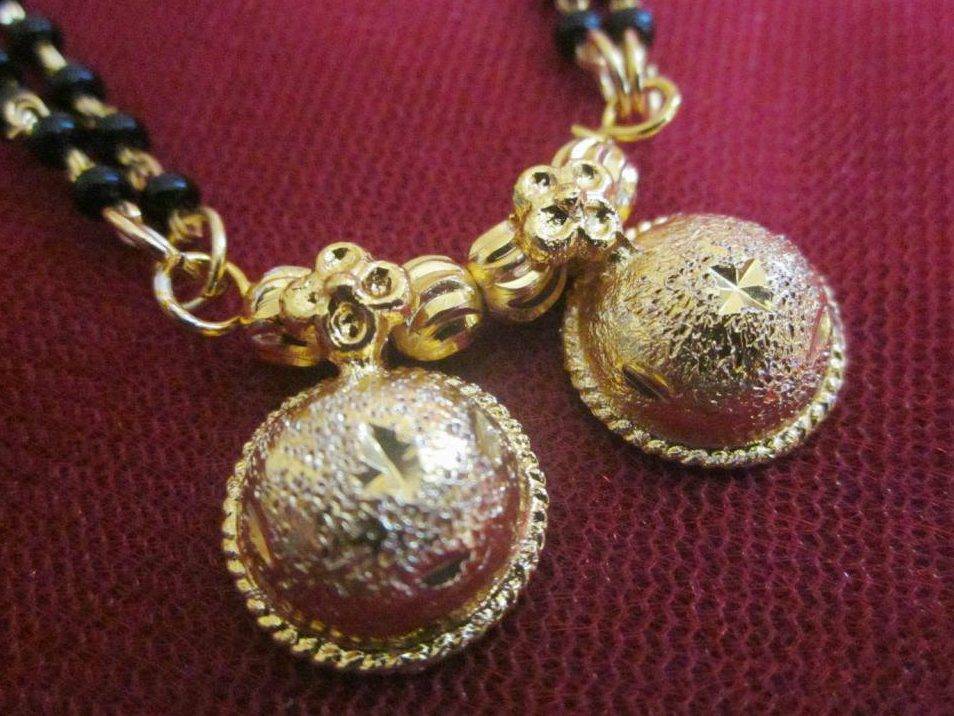
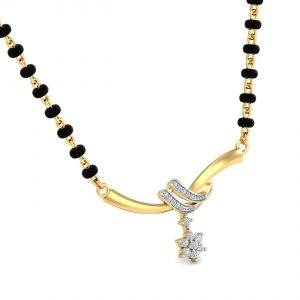

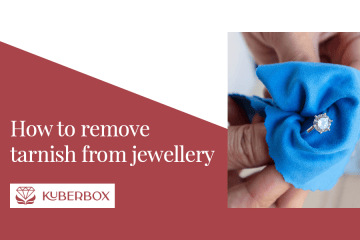
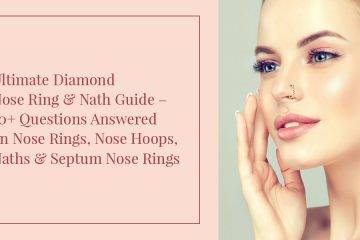
17 Comments
Pooja Verma · July 5, 2016 at 3:26 pm
nice mangalsutras ..to know more designs ..Diamond mangalsutra online with IGI or DGLA certified diamonds are available at competitive prices at ****.com. Buy Diamond Mangalsutra/Tanmaniya of latest designs at affordable prices. Ready for shipment
****LINK REMOVED****
Priya Sharma · July 19, 2016 at 7:48 pm
Various patterns of mangalsutra as wore in different states of India
rohit sharma · July 25, 2016 at 3:22 pm
Wow!! nice article i had never thought before that In india there exist so many varities of Mangalsutra. Thanks for sharing this article
rohit sharma · September 10, 2016 at 7:57 pm
well, i had no idea that in india mangalsutra is addressed with different names and it has different significance. IT was very informative article and writer has managed to make this post engaging. Thanks once again for sharing this wonderful knowledge..
Sonal Sahrawat · October 8, 2016 at 11:47 am
Beautiful mangalsutras! you have great collection of all indian mangalsutras your gold, diamond and Gemstones is very creative and beautiful jewellery and you provided best informative about mangalsutras.
Thanks for sharing
Sha · November 17, 2016 at 10:08 pm
Hi, may i know which caste are wearing this Thennaimarathali?
Can you explain on the meaning please.tq
Pooja · November 29, 2016 at 4:08 pm
Very nice post. You got really nice collections of the different type of mangalsutra. The Andra bottu and vati mangalsutra is my personal favorite.
G.Venkataraman · January 14, 2017 at 9:51 pm
Iam looking for a tali as per the custom of tamil brahmins to be sent to USA. Any suggestions
Sourav · January 16, 2017 at 10:55 am
Please check your email for the details.
Malathy · February 5, 2018 at 6:08 pm
I’m looking for thevar thaali design. Please help. Tqvm
Imran · February 25, 2019 at 1:49 pm
Your designs are awesome. I just love Your blog, thanks for sharing.
Prapti · February 17, 2021 at 11:14 am
I just loved the gold mangalsutra design…it looks richer and elegant in real.
Parth · February 17, 2021 at 11:21 am
Excellent finishing, best online jewelry ever shopped for my wife!
Hitesh Rawal · February 17, 2021 at 11:23 am
Do you have customizable jewellery? please give me details
Parth Joshi · February 17, 2021 at 11:30 am
best online jewellery ever shopped for my wife
Shiksha · February 17, 2021 at 12:06 pm
Your blogs are very informative and it has helped me in choosing the right type of mangalsutra. Keep posting such jewellery articles.
How Mangalsutra is used in Different States of India and Their Significance In Indian Marriages – Latest Masala News · July 27, 2016 at 3:06 pm
[…] Indian Mangalsutra: North Indians mangalsutras are mainly those mangalsutras which you have mostly seen in various serials and movies. It is set […]